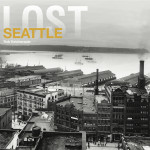Exploring Dublin in free moments.
I returned to Ireland just a couple of months after my first trip. Bored on the plane ride home, I decided to write up my comments with pencil and paper this time. Perhaps I was dehydrated or just affected by the style of the Osamu Dazai novel I finished in the plane. I hope readers will forgive my amateur writing, though. It somehow fell apart in the middle, maybe I grew tired of trying so hard.
As the Airbus doors hiss shut, my shoes embrace the pavement, reveling in the promiscuity of a week's escape from Seattle. My pride, curiosity and impatience are amplified by the excitement of a fresh city, Dublin. Our brief prior encounter only serves to entrance me more.
The antiquated laptop hangs heavy on my shoulders, my hands raw from a stiff-handled carry-on suitcase. Not true if a taxi hailed, or if the Dublin tourist center, passed by twice in disoriented double-time paces, visited. Where the hell is Grafton Street? Too proud to voice the question, the only source of an answer is my own spotty memory. It says north of St. Stephens Green, south of the river, south of Temple Bar. But what direction am I going? Finally I make it, having gone east to the docks, north to Connely, south to Pearse, and west to Temple Bar.
I try to check in to the hotel, but my room is not ready. Out on the pedestrian-only street I dodge shoppers, commuters, lunch-breakers, wanderers. The realization of opposite-side driving puts a moment's hesitation in my decisions of path, frustrating oncoming walkers. Grafton Street has nice malls (St. Stephen's Green, George's Market, Royal Hiberion Street, lovely Powerscourt Centre), department stores, boutiques, cafes, restaurants, pubs, open space, hotels, offices, but few residents. Wandering south, I find a hidden entrance to Iveagh Gardens. Perhaps it would be pretty in spring or summer, but in November the trees are bare and the ground is thick with mud. Elaborate fountains seem almost sarcastic when the earth itself looks ready to geyser. Later I discover that the day before my arrival, Dublin was besieged with serious flooding. Maybe this is an off day for Iveagh.
Next morning allows a stroll through Trinity College, and its charming old trees and buildings. Curiosity beckons me down a path between buildings to a storage shed, and the chance discovery of classrooms under the railroad. Also, a sample of bike cages gone wrong with missing tires and missing bikes. Around a bend I find myself in the hidden underside of Trinity: exposed ventilation ducts and barbed-wired roof tops resemble a penetentiary. I search out an exit, and soon gaze on my beloved Pearse station.
Ambitious plans to walk to Phoenix Park change after camera batteries die, legs cramp, and contact is made with a friend. Instead, we drive to Sutton and Howth for a walk along the cliffs of the Irish Sea. We stop in Howth for some fish and chips.
Days later, tired of expensive taxi rides in traffic jams, the much maligned transit system sparks my curiosity again. I ignorantly grab the first train that comes, an Intercity. Even now, I'm still unclear how to tell which stations it will stop at. Blackrock was luckily one. The wind from the Irish Sea cut right through me. The line is a relic of older times, ripped straight through the tide flats. Right on time, the feeder bus picks us up and crawls to the business parks.
The next day I miss the feeder by two minutes. Impatient to wait the hour for the next one, I decide to take a walk under the unexpected blue skies. The only thing more surprising than actually finding the building is that I arrive right on time: a 50 minute walk, only 5 minutes longer than the bus. Along the way, I notice for the first time that the people on street signs in Ireland are all mutants.
By nightfall that day, wind and intermittent rain plague commuters, forcing gridlock in the business park. Impatience again overpowers my better judgment. But is this even the right place to catch the bus? When will it come? How long will it take today? I strike out on my own. Somewhere on Newtown Park a turn is missed. How far off course did the gently arcing road take me? Intuition drives me to welcome Dart signs, directing me to a station. Somehow it's not Blackrock! I strayed too far south, and happened upon Seaside, where a dozing old gentleman calmed his shaking hands long enough to print me a ticket. Despite the temptation to explore more, I am drawn more by the train's will-o-wisp lights.
Hopefully I will still be seeing Dublin for our fervent trysts after the Luas line is built a few years from now. Luas' light rail from downtown to Sandyford's business parks is sure to cut my commute in half while still letting me stay in the vibrant city center. It will remind me of the urban dreams I shared with Seattle when she first seduced me. Will she ever deliver on those passionate promises of mass transit?
Notes:
Bus: Dublin bus' website has no route maps. Information about payment is at least not always accurate - on my feeder bus, the driver asked where boarders would be getting off and charged in advance. Price is based on how many "stages" have been passed through, with price increasing based on distance traveled. The only times posted at stops are for departure from the first stop, and not all bus stops indicate which routes use them. "Feeder" buses appear to only operate frequently at peak hours.
Rail: The EU is investing heavily in Dublin's transit. The Luas line, a new LRT line, will run from Abbey Street in the city center (where it will be raised and support columns are already in place) to Heuston, Sandyford, and end in Bray.
